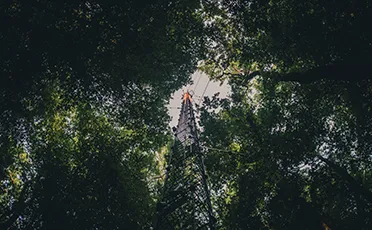The ICOS Ecosystem observation network is a setup of instruments, usually on a tower, that measures the flux of relevant greenhouse gases, energy and momentum representing the local surface (for ex-ample, bare soil, vegetation, water) surrounding the measurement sites, typically within 100m–1km. The network of ICOS ecosystem stations measures greenhouse gases, as well as living and non-living components and drivers responsible for the exchange of greenhouse gases, water and energy between ecosystems and the atmosphere. These observations are coordinated by the Ecosystem Thematic Centre.
ICOS observes greenhouse gases in a varying types of ecosystems. It is important to understand how different ecosystems respond to changing climate, for example, whether they are or will become sinks or sources of greenhouse gases. If an ecosystem is a sink, it tends to remove carbon dioxide from the atmosphere which helps to slow down the global warming. On the opposite; if an ecosystem is a source, it tends to release carbon dioxide or other greenhouse gases to the atmosphere which speeds up the global warming.
For example, boreal forests currently take up carbon dioxide from the air and store about one third of all the carbon situated in the land. Also, human management of forests alters e.g. water flow which leads to changes in the greenhouse gas balance. On the other hand, permanently frozen soil (permafrost, found in tundra environments) and peatlands are important carbon storages. As temperatures rise due to climate change, permafrost and peat could release large amounts of stored carbon as greenhouse gases. Also, farming and agriculture are affected by climate change e.g. soil quickly losing carbon in the form of greenhouse gases that it has previously absorbed from the air over hundreds of years, making the soil less fertile for agriculture.
Additional measurements of ancillary parame-ters on air, plants and soil (or water body) are also made within this footprint area. The purpose of the ancillary measurements is to support process stud-ies and to help in understanding the physical and biotic factors controlling the greenhouse gas fluxes. The ICOS Ecosystem observation network adheres to the monitoring principles of the Global Climate Observation System (GCOS) and Global Terrestrial Observing System (GTOS).

The ICOS ecosystem station network contains over 100 stations in 16 countries.

The ecosystem observations are coordinated by the Ecosystem Thematic Centre (ETC).